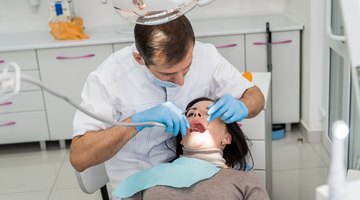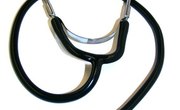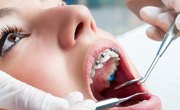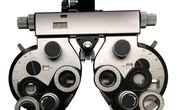Dentistry could be a great career for you if you are interested in science and oral health, are detail oriented and have good decision-making, communication and leadership skills. The DMD and MSD are two different degree programs you may pursue if you wish to become a dentist.
Tip
DMD stands for Doctor of Medical Dentistry. The MSD title means that a dentist has received a Master of Science in Dentistry after pursuing more education.
What Do Dentists Do?
On a daily basis, dentists diagnose and treat conditions affecting the mouth, teeth and gums. They extract, replace and whiten teeth, perform root canals, obtain and analyze X-rays of the mouth and provide preventative care and oral hygiene advice. Most invasive procedures require dentists to administer anesthetic to keep their patient's pain to a minimum. A dentist may provide general dental care or specialize in a particular area, such as orthodontics or oral surgery.
How to Study Dentistry
To pursue a career in dentistry, you have to follow a certain process. First, you must complete a bachelor’s degree in the major of your choice as well as prerequisite courses specified by your chosen dental school. Common prerequisite courses include accounting, art, business management, statistics, cell biology, genetics, microbiology and molecular biology. The school may require a certain grade in all prerequisite courses, typically a grade of C or higher.
After getting your bachelor's degree, you must attend a four-year professional dental school program to obtain a DDS (Doctor of Dental Surgery) or a DMD (Doctor of Medical Dentistry).
Dental Admission Test
Students need to take the Dental Admission Test, or DAT, a standardized online exam that assesses academic capacity and scientific knowledge about 15 months before beginning dental school. Generally, it is taken in the spring/summer following the junior year of college. A minimum score on this exam may be required to gain entrance to dental school. Dental schools consider DAT scores during the admissions process as well as grade point average, interviews and letters of recommendation.
Dental School Interview
Every school’s interview process is unique, so it's a good idea to contact the school directly to ask for details. Some interviews are one on one, while others are in groups or mixed-multiple interviews. Generally, the interview is designed to assess qualities such as self-confidence, interpersonal skills and resilience.
Prepare for the interview by thinking about why you want to pursue dentistry, what qualities you have that will make you a good dentist and what you have done in your life that will demonstrate a well-rounded character. It's a good idea to read the American Student Dental Association's member magazine, Contour, to familiarize yourself with current news and developments in the dental profession.
You may benefit from joining a dentist mentoring program or the ASDA, which can help to guide you through the dental school admission process. The more hours of observation you have under your belt, the more your application will impress your chosen dental school. Observing a practicing dentist also gives you a deeper understanding of what is involved in being a dentist.
DMD vs. DDS
Most dentistry students on the West Coast have a DDS degree, while East Coast students usually have a DMD degree. Dentists who have a DMD or DDS have received the same education, following the same curriculum at an accredited dental school.
Legally, there is no difference between a DMD and a DDS, and it has no implication for the patient. All licensed dentists in the U.S. have received all education and training necessary to maintain their patients' oral health.
DMD Credentials vs. MSD Credentials
If a dentist has DMD after her name, this stands for Doctor of Medical Dentistry. If a dentist has an MSD title, this means she has received a Master of Science in Dentistry after pursuing more education at an accredited university. Many specialist dentists, like orthodontists, have this credential.
Studying for a DMD or DDS Degree
Dental school requires dedication and hard work. Typically, you will spend up to 40 hours per week in lectures, labs and clinics with study time on top of that. Most schools follow the same general curriculum whether they offer the DMD degree or the DDS degree.
Years One and Two
The first two years of the program include biological science classes with an emphasis on the body's functions and structure and common diseases. Classes include anatomy, physiology, biochemistry, microbiology, pharmacology, oral anatomy, oral histology, oral pathology and dental-oriented sciences.
Students may also provide patients with very basic oral health care, but most of their training consists of carrying out procedures on models of the mouth and teeth.
Years Three and Four
The third and fourth years of the program focus on direct patient care, including children and chronically ill, disabled and senior patients.
Students often rotate through several clinics and other health care settings, such as hospitals and clinics, while being supervised by a clinical instructor.
State Licensure for Dentists
When you have completed dental school, you must pass a licensing examination before you can practice as a dentist. All states require passage of the National Board Dental Examination, a two-part written exam covering dental sciences, ethics and clinical procedures.
Additionally, all candidates must pass a practical examination administered or approved by the licensing board in their state. States may also require first aid or CPR certification, a background check and/or an interview.
Becoming an MSD Dentist
Students who wish to broaden their dental background after obtaining the DDS or DMD may pursue an MSD program in a specialty of their choice. The American Dental Association's Council on Dental Education and Licensure recognizes nine specialties, including oral and maxillofacial pathology, orthodontics and dentofacial orthopedics, dental public health and pediatric dentistry.
Typically, the MSD program teaches students innovative problem-solving techniques, facilitates lab and/or clinic-based experimentation and includes data collection and data analysis. Students also complete a thesis.
Admission Requirements for the MSD
Admission requirements for the MSD program vary, but most schools require letters of recommendation as well as a DDS, DMD or equivalent degree. Some schools may admit students to the MSD program after two to three years of undergraduate study and let them earn bachelor's degrees as part of the dental program.
Master of Dental Science
Another advanced dental program is the Master of Dental Science, or MDS, program. Both the MSD and the MDS provide advanced academic training and include core courses in oral biology and advanced biomedical science for dentistry. However, the MSD is more research based, and the MDS is more clinically focused. In some cases, a residency of up to two years is required before earning a specialty state license.
Cost of Becoming a Dentist
Becoming a dentist doesn't come cheap. The American Dental Education Association revealed that dental students graduate with an average student loan debt of $287,331. The actual cost varies greatly depending on where you study. Private schools are more expensive than public schools, and merit- and need-based financial aid, scholarships and in-state discounts can reduce the expense.
Fortunately, dentistry is a career that pays well, is considered to provide a healthy work-life balance and is challenging without being too stressful. According to a 2019 U.S. News & World Report ranking of the top jobs, being a dentist ranked as the fourth-best career in the U.S. with orthodontist coming in fifth. The median salary for a dentist in 2019 is $151,440, while an orthodontist can expect to earn around $208,000.
Related Articles
References
- Mouth Healthy: DDS/DMD
- Rutgers School of Dental Medicine: Dental Master's Programs
- American Dental Education Association: Dental School Curriculum
- Colgate: Dentist Requirements: What It Takes To Become A Dentist
- American Student Dental Association: Dental Student Debt
- American Student Dental Association: Choosing a Dental School
- American Student Dental Association: Interview Tips
Writer Bio
Claire Gillespie has been writing and editing for 18 years. She has written about high school and higher education for private clients and various websites, including SheKnows and Reader's Digest.











